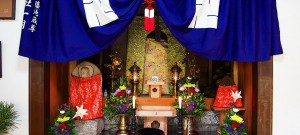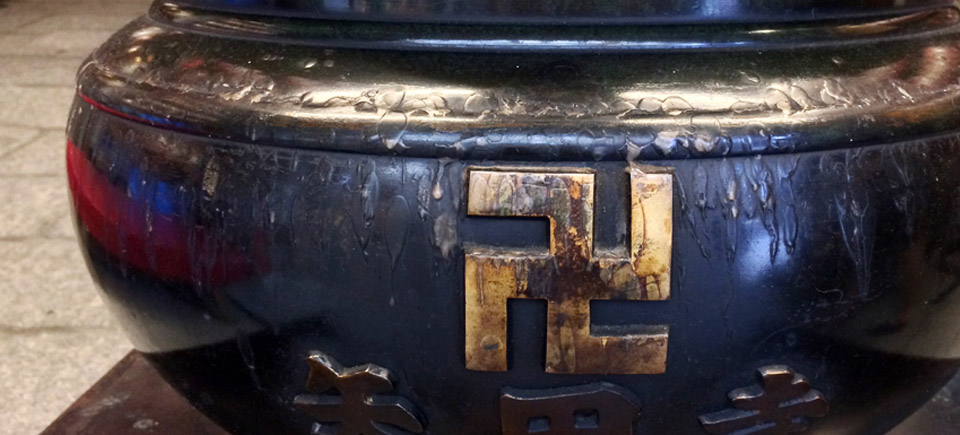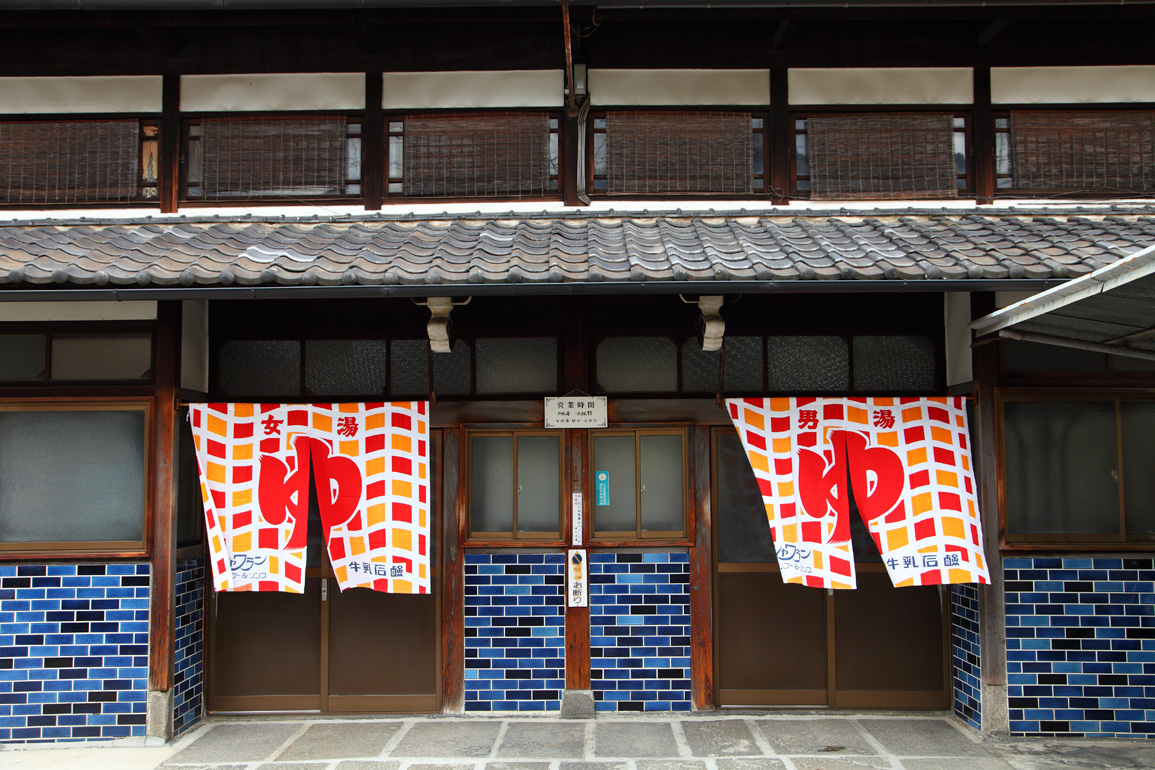Feature
Rethinking the Swastika
Westerners often associate the swastika with a dark past, but the same symbol brings good vibes and positive meanings to Buddhists, and is ubiquitous across Japan and other parts of Asia.
One day I was showing some tourist friends around various temples and shrines in Osaka and their son piped up with a query: “Dad, why are there Nazis in Japan?”
Baffled, his father turned to where his son was pointing.
 The child had recognized the swastika on the noren (fabric dividers hung between rooms or in doorways) at Ishikiri Shrine and like so many other Westerners, had innocently identified it with the modern connotation of the symbol. We quickly explained that here in the East, the swastika holds a different meaning, one of long religious importance and reverence. Many minds are still clouded with the wrong images of this symbol, so let’s put the record straight.
The child had recognized the swastika on the noren (fabric dividers hung between rooms or in doorways) at Ishikiri Shrine and like so many other Westerners, had innocently identified it with the modern connotation of the symbol. We quickly explained that here in the East, the swastika holds a different meaning, one of long religious importance and reverence. Many minds are still clouded with the wrong images of this symbol, so let’s put the record straight.
The swastika has had a global presence as a prominent spiritual symbol in several ancient civilizations dating back 3,000 years, from the Egyptians to Native American groups to the Kuna people of Panama, with other historians believing it was a fire and sun symbol originating in Asia.
The swastika found its way to Japan through the subsequent spreading of Hinduism then Buddhism via India, and then continued onward from China. The word “swastika” comes from the Hindu Sanskrit word svastika meaning good fortune, luck and well-being.
Kanji was introduced to Japan from China in the 8th century and the swastika was adopted into Japanese language and culture, with the positive connotation of the symbol remaining unchanged.
In both countries, it was seen as an icon of eternity, abundance, prosperity and long life. Even today, the swastika is commonly known in Japan as the man-ji 万字 (man = 10,000 years; the same kanji used on Japan’s ¥10,000 bill) and is used frequently in shrines and temples as an auspicious representation of Buddhism.
The original design of the swastika was a horizontal, left-facing and clockwise graphic. It was only when the Nazi party flopped it, rotated it 45 degrees, and turned it to face the right, the swastika was corrupted from something positive to something negative.
Having no stigma at all in the East, the way it does in the West as an emblem of evil, the swastika can often be found imprinted on the chest, feet or palms of Buddha in images or on statues. Sacred Buddhist texts often start with the swastika. Some of the Japanese clans in the Edo era even chose to use the man-ji as their family crest. The Hachisuka family as well as the Tsugaru and around 60 of the smaller clans belonging to the Tokugawa clan adopted the good-luck symbol for use on their helmets and banners for battle.
Nowadays, maps of older cities such as Kyoto and Nara use the swastika to indicate where Buddhist temples are located. Kinkakuji and Ryoanji temples as well as other surrounding temples in Kyoto are clearly marked by the swastika.
Getting re-educated about the original meaning of the swastika can help you – and those you are sightseeing with – appreciate the deeper meanings and symbolism of Buddhism in Japan.














